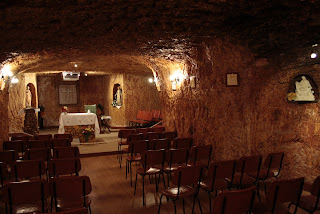Je weiter wir uns von der Kueste entfernen und Richtung "red centre" fahren desto trockener wird die Gegend. Koennte man meinen zumindest denn wir fahren durch sattes Gruen das aus knall roter Erde waechst. Es hat seit 10 Jahren nicht mehr so viel geregnet im Hinterland Australiens, dass wir sogar Enten in einem Teich neben der Strasse finden. Die rieseige Region ist voller Leben, es ziehen Vogelschwaerme and uns vorbei, Emus, Wuestemaeuschen, Kuehe, Schafe und Lizards beochten wir ebenfalls. Es gibt sogar Kamele hier welche wir aber nur in einem Army Anhaenger zu sehen bekommen.
Da Distanzen hierzulande etwas andere bedeuten als in der Schweiz gibt es riesige Lastwagen, sogenannte Road Trains die in einer Ladung bis zu vier Anhaenger zum Ziel bringen.
Alles in allem ist das Outback ein sehr spezieller Ort, die weiten Weiten sind unvorstellbar gross und die Sonnenuntergaenge atemberaubend. Bleiben nur die laestigen Fliegen die einem staendig im Gesicht sitzen als einziges Uebel.
The further we drive north towards the "red center" of Australia the dryer the landscape get. That's at least what one would expect during the Australian summer. Actually the outback presents itself with green bushes, grass and trees growing out of the glowing red soil. The rainfall hasn't been as much since 10 years that we even see ducks swimming in a pond next to the highway. This region is full of Live, Bird swarms flying over our heads, we see Emus, Cows, Lizards, Sheep and desert mice roaming around. There are also Camels which we however just find in a caravan of an Army truck.
Since distances have another meaning here than back home, so called road trains deliver huge loadings with up to 4 trailers to their destination.
All together the outback is a very special place, the wide plains are vast and the sunsets jaw dropping. It is just the annoying flies which makes the stay here a bit uncomfortable.


























